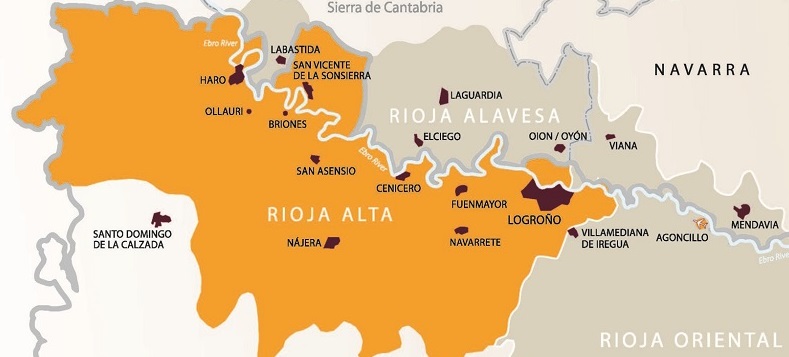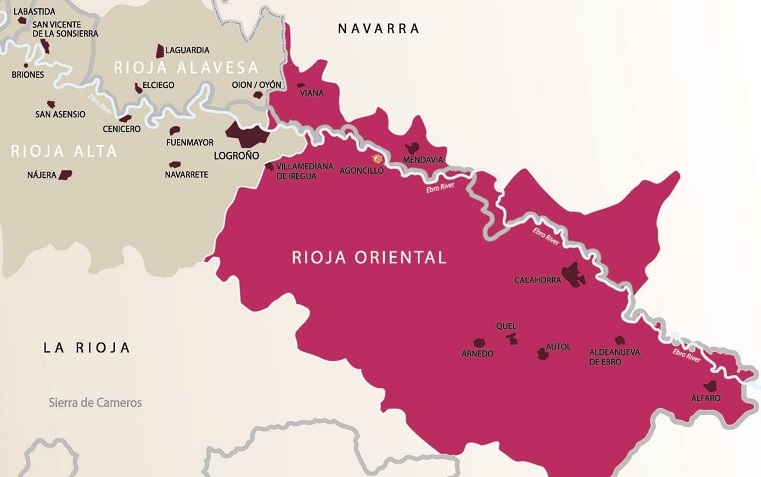Garnacha Blanca (Spain)
Garnacha Blanca is a white wine grape related to the red grape Garnacha.
In France, the grape is called Grenache Blanc.
Garnacha Blanca Flavors
Citrus. Lemony. Green Plum. Pear. White Flowers. Herbs. Anise. Salty Minerals.
Lemon |
Lime |
Grapefruit |
Pear |
Flowers |
Herbs |
Anise |
Salt |
Garnacha Blanca Profile
Garnacha Blanca wines are full bodied, with low acidity and an oily character:
| SUGAR: | Dry (3 g/l) |
| BODY: | Medium - Full |
| FRUIT: | Medium |
| ACIDITY: | Medium - Low |
| ALCOHOL: | 11.5-13.5% ABV |
| Serving temperature: 10-12°C (50-54°F) | |
Garnacha Blanca Food Pairing
Garnacha Blanca is very food friendly.
Mediterranean. International. Indian. Asian.
Olive Oil |
Salads |
Vegetables |
Asparagus |
Tapas |
Pasta |
Seafood |
Sushi |
Fish |
Chicken |
Turkey |
Pork |
Excellent Pairings
Fresh Green Herbs. Green Salads. Vinegar.
Asparagus. Artichokes. Cucumber. Tomatoes.
Tapas. Paella. Garlic Seafood.
Fried White Fish. Sushi. Sashimi. Wasabi.
Green Curry. Sweet Chili. Moroccan Tagine.
Chicken Satay. Turkey. Pork.
The Ideal Glass for Garnacha Blanca
The Chardonnay Glass was designed for enjoying full-bodied white wines. They have a wider bowl and a tapered top to enhance the buttery and oaky notes found in aged wines.

|
The wide bowl steers the wine to the sensitive parts of the tongue, ensuring that the acidity creates a harmonious balance with the sweet aromas of the wine. The wide bowl allows the full bouquet of aromas to develop. It also reduces the risk for over-concentrated aromas. |
Garnacha Blanca Cheese Pairing
Brie or Camembert
These creamy, rich cheeses complement the full, round mouthfeel of a full-bodied Garnacha Blanca. The buttery flavors in both the wine and the cheese enhance each other beautifully.
Gruyère and Comté
The nutty, slightly sweet flavors of these cheeses pair well with the complex fruit and oak characteristics of a full-bodied white wine. The firm cheese texture adds a pleasant contrast to the richness of the wine.
Munster And Époisses
A rich and pungent washed-rind cheese provides a bold contrast to the refinement of a full-bodied Garnacha Blanca.
Aged Gouda
Aged Gouda, with its caramel and butterscotch notes, matches the depth and complexity of a full-bodied Garnacha Blanca. The wine’s acidity helps balance the cheese’s rich flavors.Havarti
The creamy and mild flavor of Havarti pairs well with the rich and buttery texture of a full-bodied Garnacha Blanca, making for a delightful and balanced pairing.
Aged Cheeses
The crystalline texture and savory, nutty flavor of aged chesses will complement the undertones of a full-bodied Garnacha Blanca.
If You Like Garnacha Blanca
You May Also Like:
Wine Region Rioja
Rioja is a famous wine region in the north-central part of Spain. It is Spain’s largest red wine producing region with over 600 wineries and an annual production of over 400 million bottles.
The Rioja region is a denominación de origen calificada, "Qualified Designation of Origin (D.O.Ca)", the highest category in Spanish wine regulation.
Rioja wines ares made from grapes grown in La Rioja and Navarre, and the Basque province of Álava.
The key appellations are Rioja Alta, Rioja Alavesa, and Rioja Oriental (previously Rioja Baja).
Rioja Alta (Rioja High)

Rioja Alta is Located on the western side of Rioja. It has an Atlantic climate, and its soils consist of iron-rich clay mixed with limestone. Thanks to the elevation and cooler temperatures, Rioja Alta wines have more tannin and higher acidity than Rioja Oriental, and they are often more elegant.
Rioja Alavesa

Rioja Alavesa is the smallest of the Rioja regions. It is located between the Ebro River and the rocky mass of the Sierra Cantabria. The wines bear a high resemblance to the wines of Rioja Alta with high tannins and high acidity.
The vineyards here are located at high altitudes, resulting in cooler temperatures that aid in the acquisition acid levels and good colour. The soil is rich in chalky clay, limestone and sand.
Rioja Oriental (Rioja East)

The wines from Rioja Oriental (Rioja East), formerly the Rioja Baja (Rioja Low) are fruit-forward and the wineries focus on wines designed to drink young.
Red Wines
The region is best known for high-quality Rioja Wines.
A typical Rioja blend consists of 60% Tempranillo ("the Grape of Spain") and 20% Garnacha along with other fruity additives like Mazuelo (Cariñena) and Graciano.
White Wines
Viura (Macabeo) is the dominant white grape in Rioja, accounting for 70% of white varieties.
Viura is also found in France, particularly in Roussillon and the Languedoc, where it is called Maccabeo or Maccabeu.
Nine white varieties is allowed to use in white Rioja: Viura, Malvasía Riojana, Garnacha Blanca, Chardonnay, Sauvignon Blanc, Verdejo, Maturana Blanca, Tempranillo Blanco and Torrontés.
DOCa Rioja (La Rioja)
Rioja was the first Spanish wine region to obtain DO status in 1925. In 1991, it was promoted to DOCa (Qualified Designation of Origin), a higher category reserved for wines maintaining a proven consistency and quality over a long period of time.
| Black Grapes | White Grapes |
|
88% Tempranillo |
70% Viura (Macabeo) |
| Red Wines | White Wines |
|
|
Viura (Macabeo) |
| Soil | Climate |
|
Rioja Alta: Rioja Alavesa:
Rioja Oriental (Baja): |
Hilly Riverbanks. |

Alcohol can be addictive. Always drink in moderation.
© Copyright 2015-2025 W3 Wine School. All Rights Reserved.



















